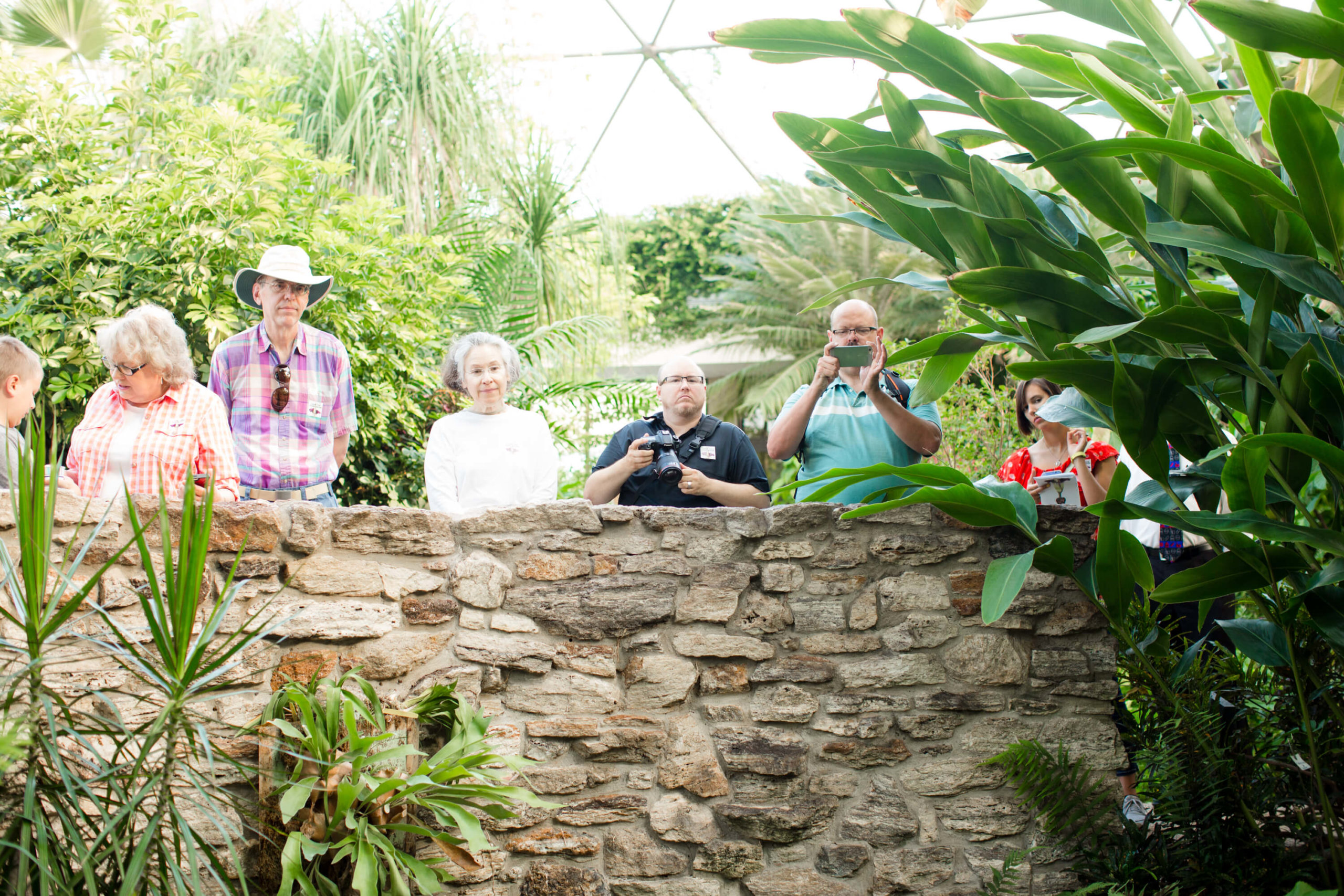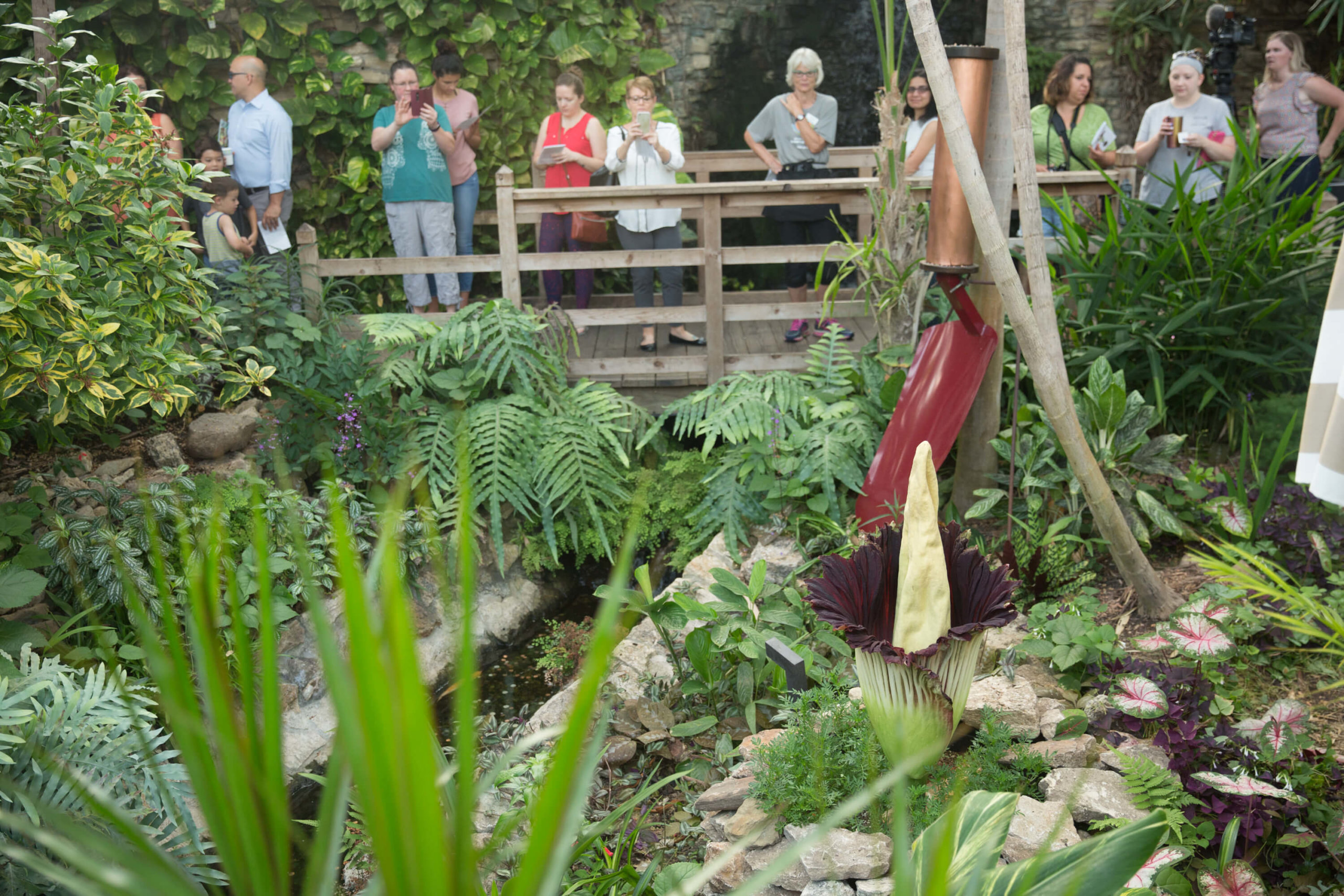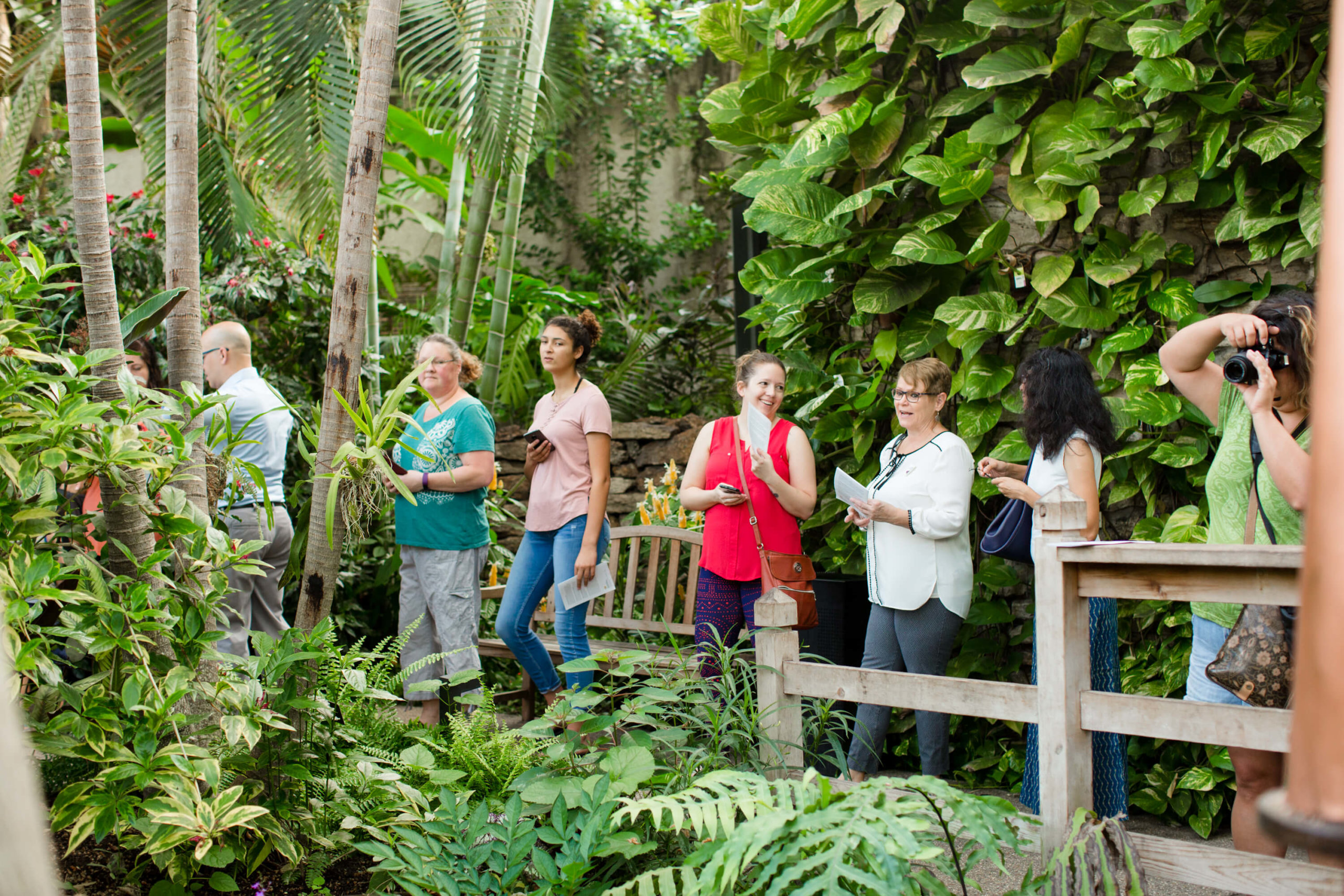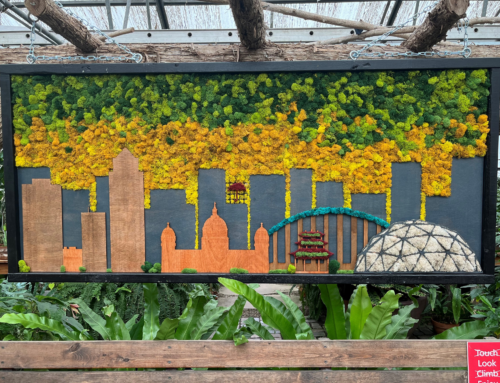Corpse Flower Bloom: July 25, 2017
Since it arrived in Des Moines, our Amorphophallus titanum, also referred to as Titan arum and commonly known as corpse flower, grew in the Botanical Garden greenhouses until the spring of 2017, when it finally dropped its leaf and went dormant underground—often the first hint of an upcoming inflorescence (or bloom).
Recognizing the opportunity to acclimate the plant for an eventual show, Horticulturist Derek Carwood relocated the plant to the conservatory. Then, he watched intently as a shoot emerged in early July 2017, bolstering hopes that an inflorescence was imminent. Final affirmation came July 12, when a spadix (spike-like structure arising from the center) appeared.
A Wild Ride
From the moment of the official announcement on July 13, 2017, the Titan arum became an Internet sensation. Viewers flocked to its YouTube livestream, watching around the clock from across the country. The Botanical Garden’s Facebook audience grew by more than 60 percent with thousands anxious to know the latest. A naming contest with hundreds of entries produced its official name: Carrion My Wayward Son (a nod to the Kansas tune), or “Carrie” for short.
 The digital world was just the beginning of Carrie’s impact. Extended hours allowed thousands of people for a chance to see this first-of-its-kind-in-Iowa flower up close. Visitors flew in from other states and stayed in hotels awaiting the unfurling. People purchased memberships just for unlimited access to the plant, returning day after day to see its progress. Local TV and radio stations and newspapers provided extensive coverage, their stories re-transmitted by media outlets from Vermont to Washington.
The digital world was just the beginning of Carrie’s impact. Extended hours allowed thousands of people for a chance to see this first-of-its-kind-in-Iowa flower up close. Visitors flew in from other states and stayed in hotels awaiting the unfurling. People purchased memberships just for unlimited access to the plant, returning day after day to see its progress. Local TV and radio stations and newspapers provided extensive coverage, their stories re-transmitted by media outlets from Vermont to Washington.
As the buzz built, the bracts (leaf-like structures) surrounding the plant dried out over the course of several days and peeled back from the plant and fell to the ground on July 19, a common indicator that an unfurling would happen soon. And then everyone waited. And waited.
Finally, on the evening of July 24, the spathe (petal-like structure) began to pull away from the central spadix ever so slightly, and by the middle of the night, was open—and smelling. The Botanical Garden opened at 7 a.m. on July 25 to a line of approximately 50 people, and a steady stream of visitors, many of whom had never visited the Garden before, continued until the facility closed at 11 p.m.
“I think the greatest part of the ‘Amorphomania’ we witnessed is the number of new connections that have been made,’ said Derek Carwood, curatorial horticulturist and Carrie’s primary caretaker.
A Hopeful Future

Beyond the buzz leading up to July 25 and the day of bloom itself, Carrie the corpse flower has left an undeniable imprint on the Botanical Garden and those who followed her progress.
“People not ordinarily enthralled by botany or horticulture have told me that they’ve spent hours searching the Internet for more information on Amorphophallus and other plants,” Carwood said. “These new connections are self-driven, making them priceless for educators—and they have the potential to last a lifetime.”
What’s next for this rare plant? During the day of bloom, Carwood hand-pollinated the plant using donated pollen from Kathy Upton, a horticulturist in Missouri. All signs currently point to a successful pollination, which with any luck will lead to future corpse flowers and help increase the species’ genetic diversity.
When will Carrie bloom again? No one knows for sure, but the average wait is approximately five years. And chances are, next time she will be taller, wider—and smellier.
By the Numbers
- 11,843 visitors from July 13-31
- 4,636 visitors on day of bloom (July 25)
- 908,495 livestream minutes—or 1 year, 265 days—watched
Corpse Flower Fast Facts
- When it unfurls, the Titan arum emits a strong odor akin to rotting flesh, giving it the nickname of corpse flower.
- By mimicking the smell of decaying flesh, insects such as beetles and flies attracted to the scent land on the plant, picking pick up pollen and carrying it in the wild from one plant to the next. Once pollinated, the plant can produce new seeds.
- It has the largest unbranched inflorescence (group of flowers growing from one main stem) in the world at up to 10 feet tall. The Botanical Garden’s Titan arum reached just under 4 feet.
- The species originates from western Sumatra, Indonesia.
- Carrie’s bloom lasted for approximately 24 hours, with peak smell lasting for 10 to 12.
- No one knows for sure when it will bloom again; the average is 5 years.
- When not flowering, the plant produces a single large leaf up to 15 feet tall. The leaf growth cycle repeats annually until the corm (underground tuber-like structure) has reached a large enough size to bloom.







